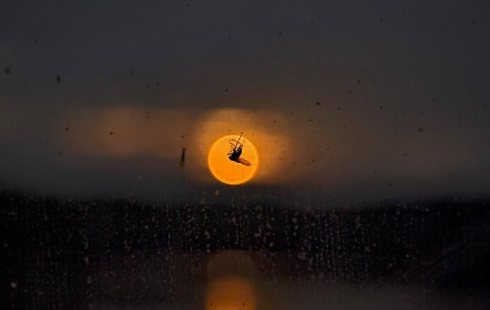Opening
August 25, 2018
Duration
August 25 until september 15, 2018
Location
CEAC (Xiamen, China)
Artist
 The artwork exhibited this time is entitled “It’s a child’s play”. In this artistic project created for her residency at CEAC in Xiamen, the artist explores the dimension of the game in photography and the chemigram through her own experiments and research. This naturally led her to consider the place of the child and the games that are offered to her in the urban world and in particular in Xiamen as a field of photographic investigation.
The artwork exhibited this time is entitled “It’s a child’s play”. In this artistic project created for her residency at CEAC in Xiamen, the artist explores the dimension of the game in photography and the chemigram through her own experiments and research. This naturally led her to consider the place of the child and the games that are offered to her in the urban world and in particular in Xiamen as a field of photographic investigation.
With her two techniques, one digital, the other analogue, the artist explores, experiments, plays, either in her laboratory apartment for chemigrams, or on Xiamen beach, a privileged playground for children night for her photographs. The photographs she proposes here question the visual perception and its relation to the imaginary, the fantasy, sometimes almost to the hallucination. Thus for her photographs, the artist plays with the light and the effects of blur related to the movements of the characters. The bodies, the clothes are multiplied and become transparent. The game of lights, the children’s game, the night, everything becomes becomes dream, magic … It weaves there perhaps already the memories that the children will have of their childhood when they will be adults. Sometimes the absence of light locks the children in the night and the spectator gives an ear to their whispers or secrets.
The artist also chose for her experiments the chemigram technique, invented in 1956 by Pierre Cordier, a Belgian artist. The chemigram combines the physics of painting (varnish, wax, oil) and the chemistry of photography (photosensitive emulsion, developer, fixer); without camera, without enlarger and in full light. The chemigram can be considered as an analog photographic technique. The chemigram can be random or controlled. The chemigram artist is confronted with different forms of chance, but she can also control it, and more importantly, program it.
Just as the chemigram lies at the crossroads of photography and painting, it appeared to the artist through her readings on Chinese art and culture that she is also at the crossroads of Europe and of China by its technique, its design. She can thus be experienced, experienced in her ability to create a common language, a game on the language, with the language. This is why the artist presents her chemigrams in the form of the square and in particular the grid of 9 squares of Chinese writing.
She thus makes this work a work at the crossroads of European and Chinese cultures. As the sinogram develops a story, a narration in this imaginary geometric space, the chemigram proposes in this space a world of dreams and imagination. Thus the general intention of this project is to cross these two aspects: the artist lets the child awaken in her through experimentation and the creation of chemigrams, technique that places it at the crossroads of Asia and from Europe, and join the children on their playground, the beach, to photograph them in their own expression. While questioning the support itself in its relationship to the game and the norm through these two techniques (the chemigram and photography). Art explores the possibilities of a common expression through dreams and games.
Thanks:
In France: Marie-Louise Bréhant, Serg Gicquel / In Belgium: Mark De Fraeye, Patricia Verburg, Pierre Cordier
To museums: Museum of Photography Charleroi, FOMU in Antwerp /
In China: May Lee, Ineke Gudmundsson and Wei Na from CEAC (Xiamen)




















